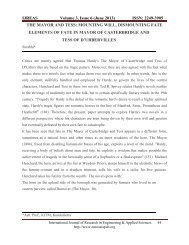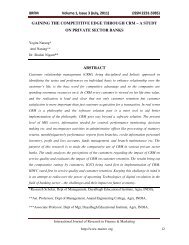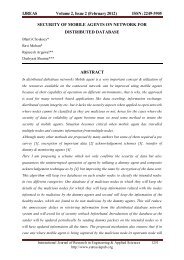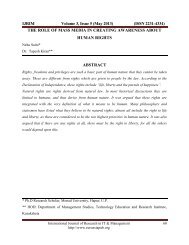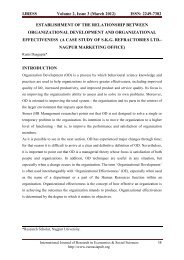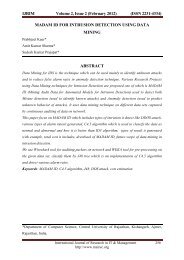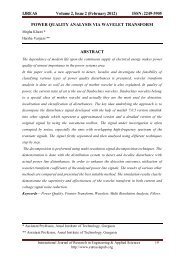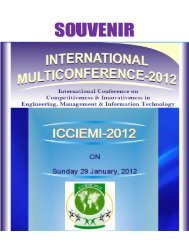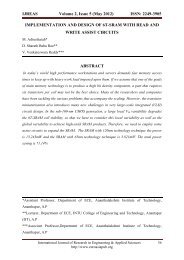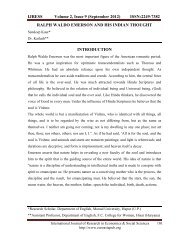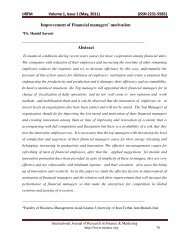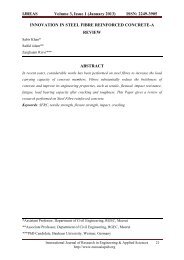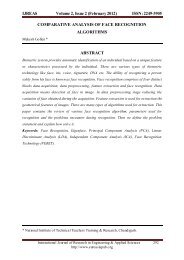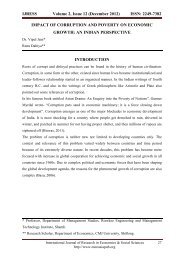A RELATIONSHIP BETWEEN ORGANISATIONAL ... - Euroasiapub.org
A RELATIONSHIP BETWEEN ORGANISATIONAL ... - Euroasiapub.org
A RELATIONSHIP BETWEEN ORGANISATIONAL ... - Euroasiapub.org
Create successful ePaper yourself
Turn your PDF publications into a flip-book with our unique Google optimized e-Paper software.
IJRFM Volume 1, Issue 2 (June, 2011) (ISSN 2231-5985)<br />
There has been a fundamental shift in paradigm in the world of knowledge, which has<br />
affected the basic way of thinking conceptualizing and operating on complexities of change<br />
in the environment. The new paradigm <strong>org</strong>anizations will have the characteristics:<br />
• Joint optimization of technical, human and ecological system<br />
• Self-managing groups with joint/shared responsibility<br />
• Control and coordination through shared norms<br />
• Optimal task grouping and multiple broad skills<br />
• Design based on minimum critical specifications<br />
• Variety increasing: option generating continuous learning<br />
• Adaptation through adjustment and learning<br />
• Simultaneous/ concurrent operation and activities<br />
• Decentralized self-content units with internal suppliers and customers; companies within<br />
company<br />
• Manager as an entrepreneur, work group as a small business<br />
IMPORTANCE OF <strong>ORGANISATIONAL</strong> CULTURE<br />
Organizational culture is shaped by the management philosophy and practices, and has<br />
profound impact on the way employees approach problems, serve customers and related to<br />
the environment. Organizational culture has directive, potency, regulatory, uncertainty<br />
reduction and consummator functions. In view of these multiple functions that <strong>org</strong>anizational<br />
culture performs, it often becomes a substitute to the formal network of structure, rules and<br />
procedures prevailing in an <strong>org</strong>anizations leading to widening of the gap between espoused<br />
theory and theory in use in most <strong>org</strong>anizations. Continuity in culture is maintained through<br />
selective transmission of cultural elements from one generation to another.<br />
Since <strong>org</strong>anizational culture is represented at various levels such as behaviours and artefacts<br />
constituting the observable units/dimensions; beliefs, attitudes and values manifested in<br />
patterns of response and assumptions that are often beyond the level of consciousness; it<br />
affects the fundamental choices <strong>org</strong>anizations make in defining and relating to the<br />
environment.<br />
Organizations are also tending to evolve sub-cultures depending on formal and informal<br />
group formation, ethnic affiliation and task demands. For the group within the <strong>org</strong>anization,<br />
culture may provide a common purpose and facilitate co-ordination of activities.<br />
International Journal of Research in Finance & Marketing 50<br />
http://www.mairec <strong>org</strong>



